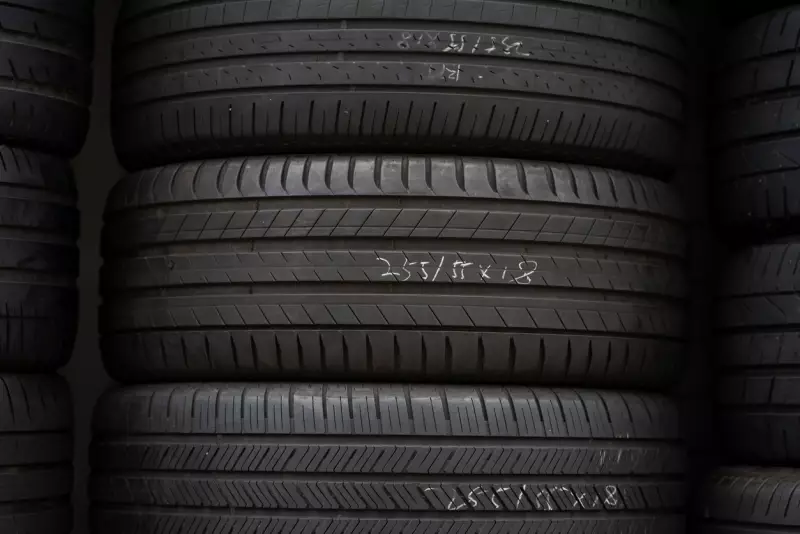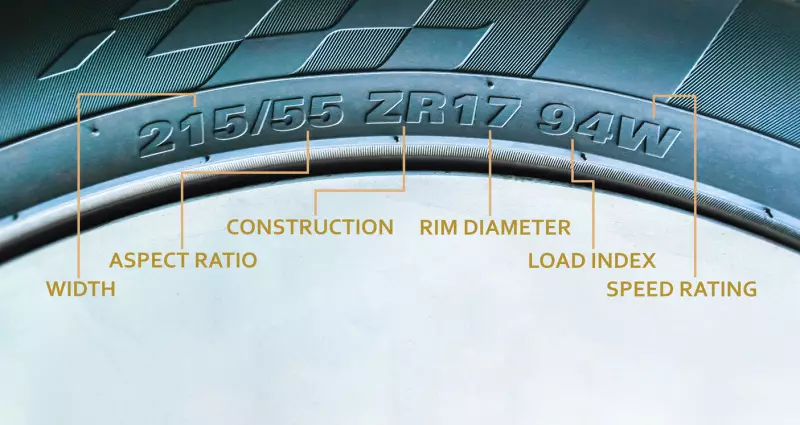
As a vehicle owner, it's helpful to understand how to read tire size. Tires are sold in a wide range of different sizes, and only the proper size will fit on your vehicle's wheels properly and function like they were meant to. Without a good understanding of how to read a tire size, you could end up purchasing the wrong type of tires or the improper size and get a product that doesn't work on your vehicle. Once you understand the tire size meaning, and you know how to check the current tires on your vehicle as well as the original stock tire size for your ride, you can make decisions about what size you want and how you'll adjust the performance, fuel efficiency and more of your vehicle.
How to Check Tire Size
Once you know where to find tire sizes on a vehicle, you'll never have to wonder about which tires you should get as replacements for your current ones. The first place to look, and the most obvious location, is on the tires equipped to your vehicle currently. Each tire has its size located on the side. If you can see the tires on your vehicle, you can see their size as well. You'll notice a long number and letter combination that will look something like P225/70R17 or LT235/70R18, to give you a few different examples. This specialized number gives you all the information about the size of your tire you need to find replacements properly.
By looking at your current tires, you can see what size is on your vehicle right now. If you want to know what size came with your vehicle originally, you will have to look at the vehicle's specifications to see the information. The best way to find this is to open the door of your vehicle and look at the door jam. Usually, the door jam has a wide variety of details about your vehicle, including the tire size in one of the formats listed above. The number will tell you about the different important details concerning what type and size of tire your vehicle was meant to use. By comparing the number you find on the jam with the number on your current tires, you can see whether the tires were ever changed or not. This is something you likely won't see on a car history report, and it's good information to have about your vehicle that you may not be able to get through a different method.
How to Measure Tire Size
Knowing how to find the tire size on your vehicle is the best way to get a size, but even without the number, you can take quick measurements that give you some of the details you need. Begin by measuring straight between one sidewall of your tire to the other in millimeters to get your width. Move on to measuring the distance from the top edge of the rim to the top of your tire tread to obtain the height of the tire. Now divide the height by the width and multiply that decimal by 100 to get the aspect ratio number. Finally, you can measure straight across the rim of your wheel in inches to come up with your rim diameter, and you're finished getting your numbers manually.
What Does Tire Size Mean?

If you understand the tire size explanation, you will learn more about your vehicle and the tires on it themselves. The tire size number meaning tells you details such as the type of vehicle, the width, the aspect ratio, the construction type, the rim diameter, the load index, a speed rating, and possibly the grading of the current tires on your vehicle. You should understand how to read the tire size and what each of these numbers means.
Vehicle Type
The first letter, or lack of a first letter, lets you know what vehicle type your tire is meant for. If there is a P or no letter at all, that means you have a passenger vehicle. You may also see tires with an LT at the beginning for light trucks and C for commercial. There are also a few special types of tires you should watch for. ST means special trailer and is a tire meant for a trailer that you pull. T stands for temporary spares and should never be used as a full-time replacement tire on your vehicle.
Width
The first number on your tire is the width measured from one sidewall of the tire to the other. The width is a straight measurement in millimeters. If it says 220, your tire has an overall width of 220 millimeters. Wider tires generally offer more traction than more narrow tires. You can sometimes change the width of your tires slightly, but you may need to replace the wheels with doing this, and it's often better to stick with the original width for optimal driving performance.
Aspect Ratio
After the width measurement on your tire, you'll see a slash and another number. That next number will be 60, 70, or 75, usually. It is known as the aspect ratio, and it's actually a percentage. The aspect ratio is a comparison between the width and height of the tire. If the tire has a height that is 60% of the tire's width, the number will be 60. If the height is 75% of the width, the number is 75. Generally, the lower this number is, the shorter your tire is and the better your vehicle's handling is. A higher aspect ratio often means a smoother ride, but handling will suffer slightly.
Construction Type
After the aspect ratio, you get the construction method used to produce the tire. Radial tires have an R, which means the ply cords are lined up in a radial pattern. This is the most common construction type, but you could also have D for diagonal, B for bias ply, RF for run flat, and ZR for high-speed performance tires.
After you understand how to properly locate a tire size and how to understand what a tire size means, you can order tires properly. Plus, you'll know more details about the tires you are already using on your vehicle.





















